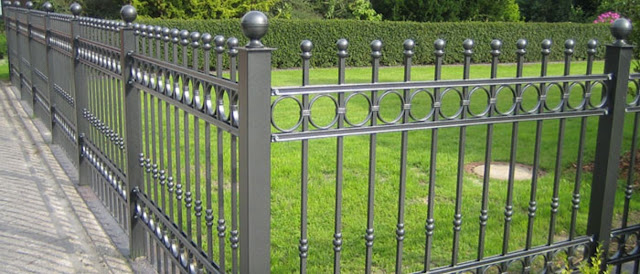Fencing Market Is Estimated To Witness High Growth Owing To Increasing Demand for Security and Privacy
 |
| Fencing Market |
The global Fencing Market is estimated to be valued at US$ 33,146.6 million in 2021 and is expected to exhibit a CAGR of 4.4% over the forecast period 2023-2030, as highlighted in a new report published by Coherent Market Insights.
Market Overview:
Fencing refers to a barrier created using different materials such as wood,
metal, vinyl, and composite, among others, to enclose an area for security and
privacy purposes. Fences are widely used in residential, commercial, and
industrial sectors to protect properties, livestock, and gardens. Fencing
offers advantages such as enhanced security, privacy, aesthetic appeal, and
protection against trespassers and wildlife. The rising concerns regarding
safety and security along with increased construction activities and
infrastructure development are driving the demand for fences globally.
Market Key Trends:
The key trend driving the fencing market is the increasing demand for security
and privacy. With the rising concerns about safety and security, the need for
secure perimeters and protection against trespassers has become crucial.
Fencing provides an effective solution to prevent unauthorized access and
intrusion into private properties, commercial spaces, and industrial areas.
Additionally, fences also offer privacy, which is particularly important for
residential properties. The growing urbanization and rising disposable income
have led to an increased focus on residential infrastructure, spurring the
demand for fences. Moreover, the rising demand for fences in agricultural and
livestock applications to protect crops and livestock from external threats
further contributes to the market growth. Overall, the increasing need for
security and privacy is expected to drive the growth of the global fencing
market over the forecast period.
PEST Analysis:
Political: The political factors influencing the fencing market include
government regulations and policies related to construction and property
development. Changes in zoning laws, building codes, and environmental
regulations can impact the demand and types of fences required in different
regions.
Economic: The economic factors affecting the fencing market include economic
growth, disposable income levels, and housing construction activities. As the
economy grows, there is a greater demand for new residential and commercial
properties, leading to increased demand for fences.
Social: Social factors influencing the fencing market include population
growth, urbanization, and changing lifestyle trends. The increasing population
and urbanization result in the need for boundary demarcation and security,
driving the demand for fences. Changing lifestyle trends, such as the desire for
privacy, aesthetics, and pet ownership, also contribute to the market growth.
Technological: Technological advancements in the fencing industry, such as the
use of automation, smart technologies, and sustainable materials, are shaping
the market. Innovative fencing systems equipped with sensors, surveillance
cameras, and remote control capabilities are gaining popularity among
consumers.
Key Takeaways:
The global
fencing market is expected to witness high growth, exhibiting a CAGR of
4.4% over the forecast period due to several factors. One of the drivers for
market growth is the increasing need for security and privacy in residential
and commercial properties. The rise in crime rates and the growing awareness of
the importance of security are driving the demand for fences.
In terms of regional analysis, North America is the fastest-growing and
dominating region in the fencing market. The region's strong economic growth,
increasing residential and commercial construction activities, and rising
security concerns are major factors contributing to the market growth.
Additionally, the presence of key players and advanced technological
developments in the region further boost the market.
Key players operating in the fencing market include Allied Tube & Conduit,
Ameristar Fence Products Incorporated, Associated Materials LLC, Bekaert,
CertainTeed Corporation, Gregory Industries, Inc., Long Fence Company
Incorporated, Betafence NV, Jerith Manufacturing Company Incorporated, Ply Gem
Holdings Incorporated, and Poly Vinyl Company Incorporated. These key players
compete based on factors such as product quality, price, innovation, and
distribution channels. They also focus on strategic partnerships, mergers and
acquisitions, and research and development activities to strengthen their
market position.
Read More:
https://www.pressreleasebulletin.com/fencing-market-growth-trends-and-forecasts/



Comments
Post a Comment